Welcome to our comprehensive guide on sports team injury protocols! Ensuring the safety and well-being of athletes is of utmost importance, and having a solid injury protocol in place is vital for any sports team. In this article, we'll explore the essential steps to follow when an athlete sustains an injury, from immediate response to long-term recovery planning. Join us as we delve deeper into effective strategies and best practices to keep your team safe and healthy!

Athlete's Information
Injuries sustained by athletes during training sessions or competitive events require immediate attention and proper documentation to ensure effective recovery. Vital details include the athlete's name, age, sport (such as soccer or basketball), team affiliation, and contact information. Date of injury occurrence, specific type of injury (like a sprained ankle or concussion), and details of how the injury happened should be recorded. The location of the incident (for example, the sports field or gymnasium) is necessary for context. Additionally, documenting initial symptoms and any immediate first aid administered (such as ice application or bandaging) is crucial. Following proper procedure ensures a comprehensive understanding of the situation for medical staff and coaches, facilitating faster recovery for the athlete.
Incident Details
Injury reports must include specific details to ensure accurate documentation for accountability and care. The date of the incident, such as March 15, 2023, and time, for instance, 3:45 PM, should be clearly noted. Identification of the injured athlete, including full name and jersey number (for example, John Doe, #23), provides clarity. The exact location of the incident, such as the main field at Central High School, indicates where the injury occurred. A concise description of the injury, like a sprained ankle or concussion, is essential for understanding the severity and required treatment. Witness accounts, including names of coaches or medical staff present, contribute to a comprehensive overview of the event. Finally, recommendations for follow-up medical evaluation, such as a visit to a sports medicine clinic, ensure proper recovery protocols are established.
Medical Evaluation and Diagnosis
Urgent medical evaluation is crucial for athletes following injuries during practices or competitions. Medical professionals assess injuries such as sprains, fractures, or concussions to determine severity. Diagnostic imaging, including X-rays or MRIs, may be employed to reveal underlying issues. Timely diagnosis enhances recovery strategies, guiding treatment plans based on specific injuries. The involvement of orthopedic specialists or sports medicine doctors can facilitate rehabilitation programs tailored to an athlete's needs. Accurate documentation of injury details, including date, time, and type of incident, supports effective communication among coaches, trainers, and medical staff. Regular follow-up examinations ensure athletes return safely to their sport, minimizing the risk of re-injury.
Treatment Plan and Recovery Timeline
Injuries in sports teams can significantly impact player performance and recovery. Immediate assessment of the injury, such as a sprain or fracture, is crucial for developing an effective treatment plan. Typically, the RICE method (Rest, Ice, Compression, Elevation) is employed within the first 48 hours after injury. A detailed recovery timeline may range from a few days for minor injuries like contusions to several weeks (or months) for severe ones, like torn ligaments. Physical therapy sessions, scheduled 1-2 times a week, focus on strengthening and flexibility exercises tailored to the athlete's specific needs. Regular evaluations by a certified athletic trainer or sports physician ensure adherence to recovery protocols, allowing for timely return to activity, ideally in alignment with the sports season schedule. Monitoring symptoms like pain levels and swelling throughout recovery informs adjustments to the treatment plan.
Communication and Follow-up Procedures
Injury protocols in sports teams, such as those implemented in professional leagues or high school athletics, require structured communication and follow-up procedures to ensure player safety and recovery. Immediate reporting of injuries, such as concussions or sprains, is critical and must involve coaches, medical staff, and sometimes parents or guardians. Medical evaluations, usually conducted by certified athletic trainers or physicians, should follow injuries on the field or court. Documentation of injuries in compliance with health regulations, such as HIPAA in the United States, ensures confidentiality while maintaining necessary records for follow-up treatment. Post-injury assessments, periodic check-ins about recovery progress, and adjustments to training regimens are important elements to minimize the risk of re-injury, promoting overall player health and team performance. Additionally, implementing educational workshops for players, coaches, and parents about injury prevention and management enhances team awareness and readiness in handling health-related issues.
Letter Template For Sports Team Injury Protocol Samples
Letter template of sports team injury assessment and treatment instructions
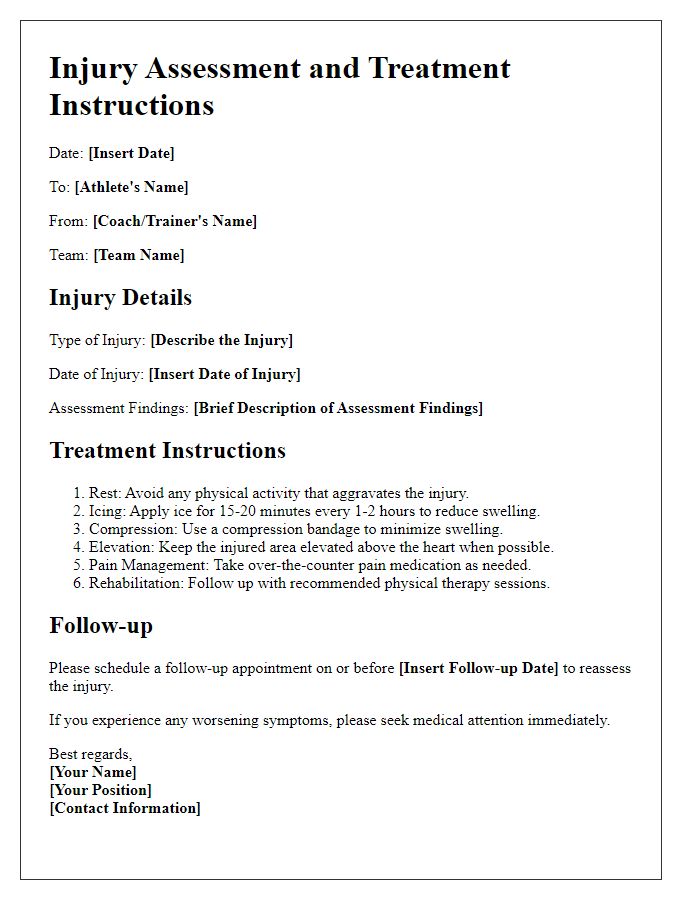

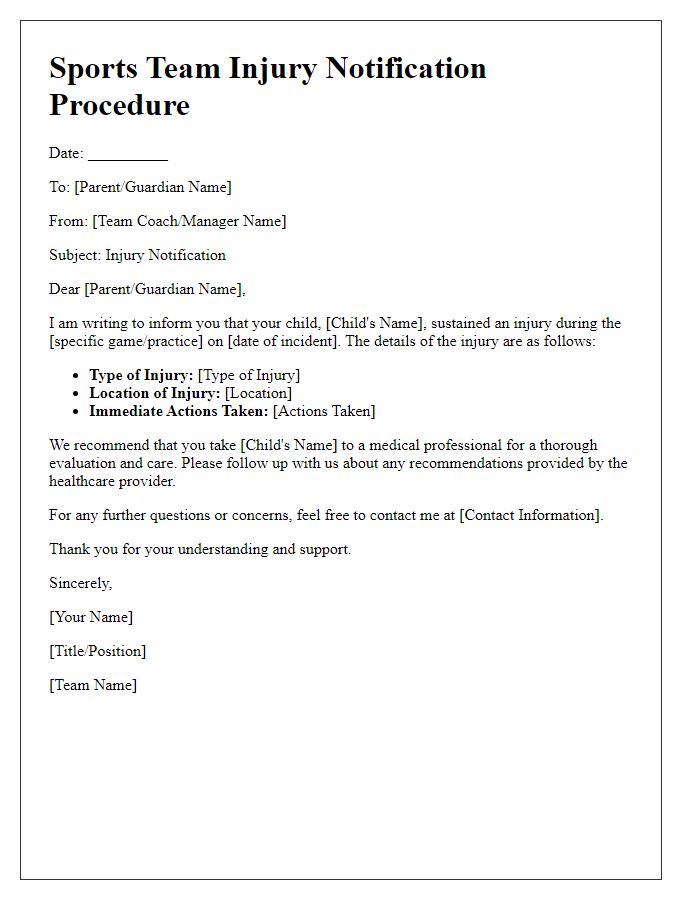
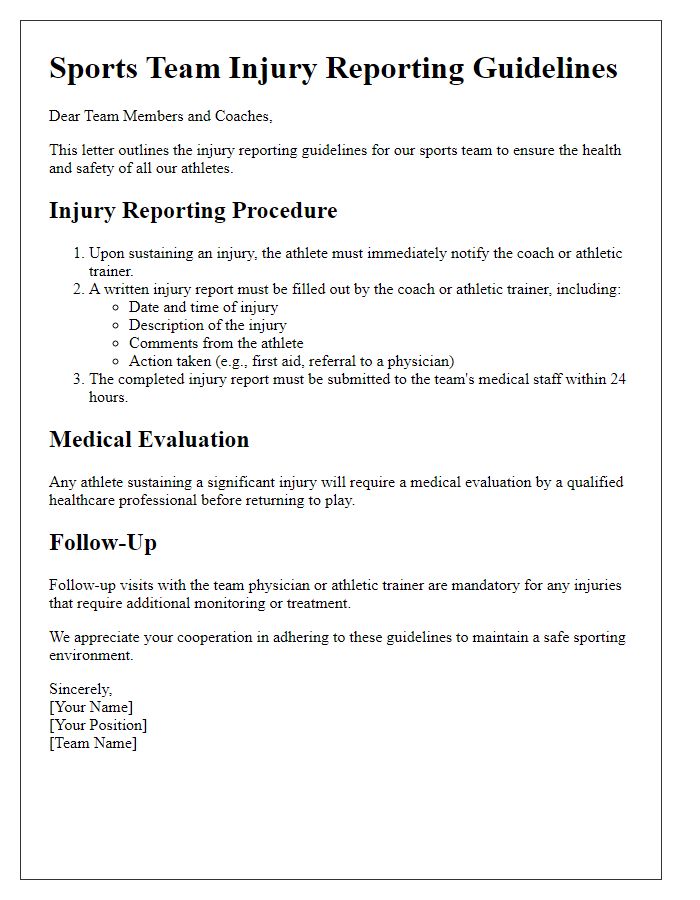
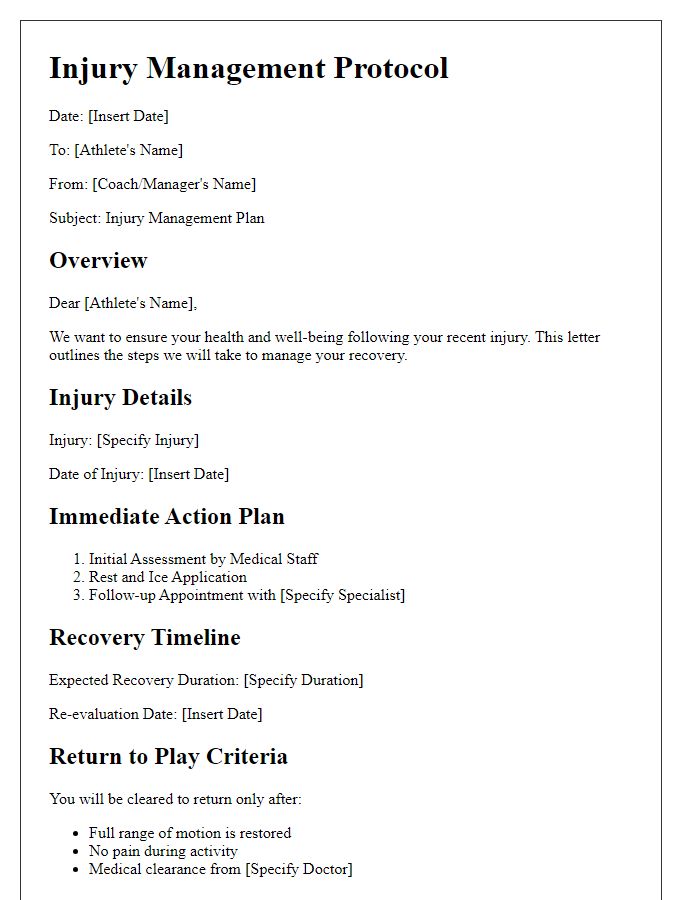
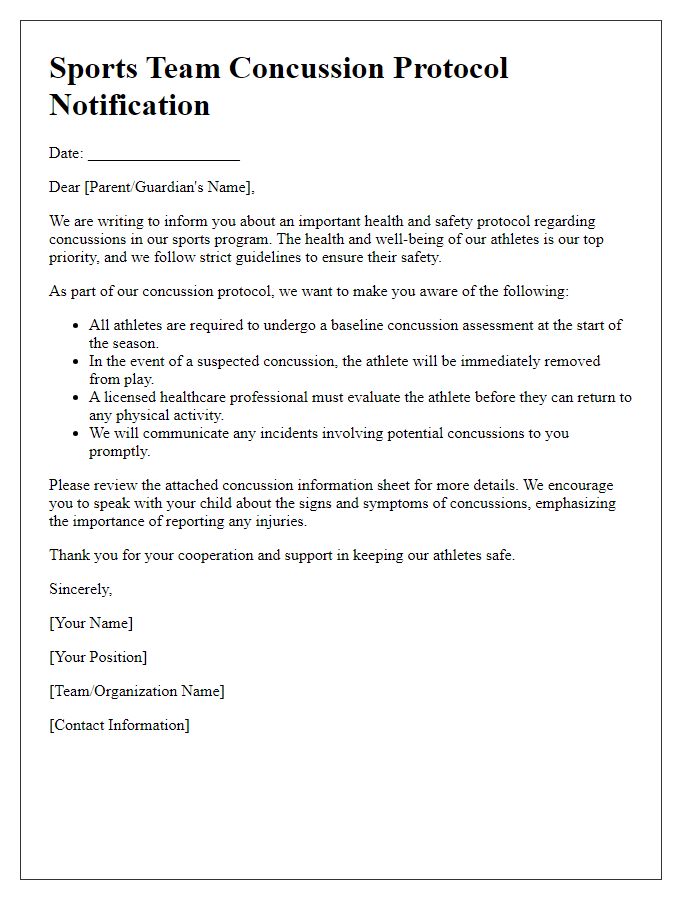
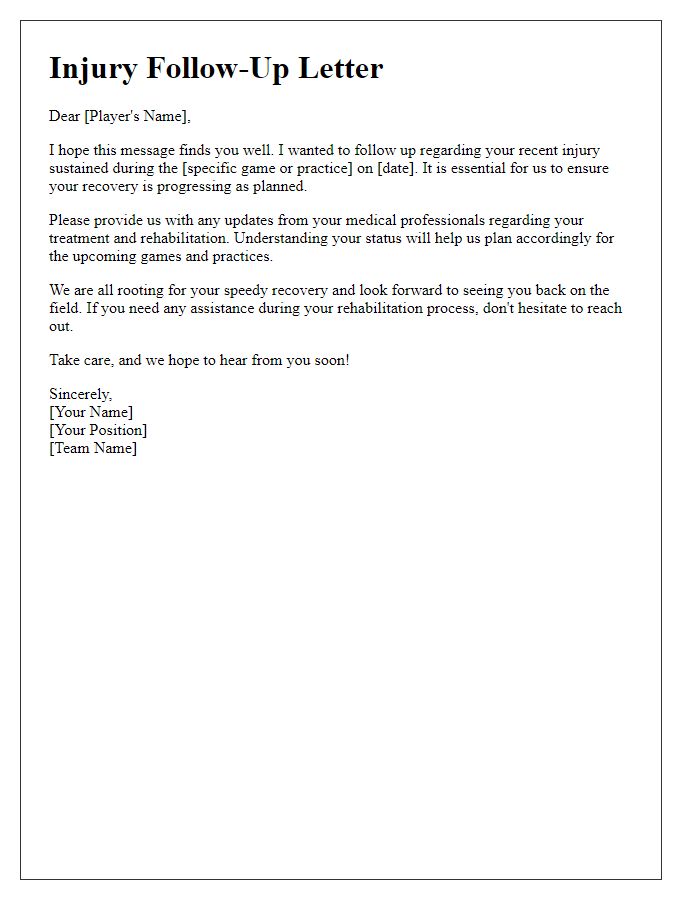
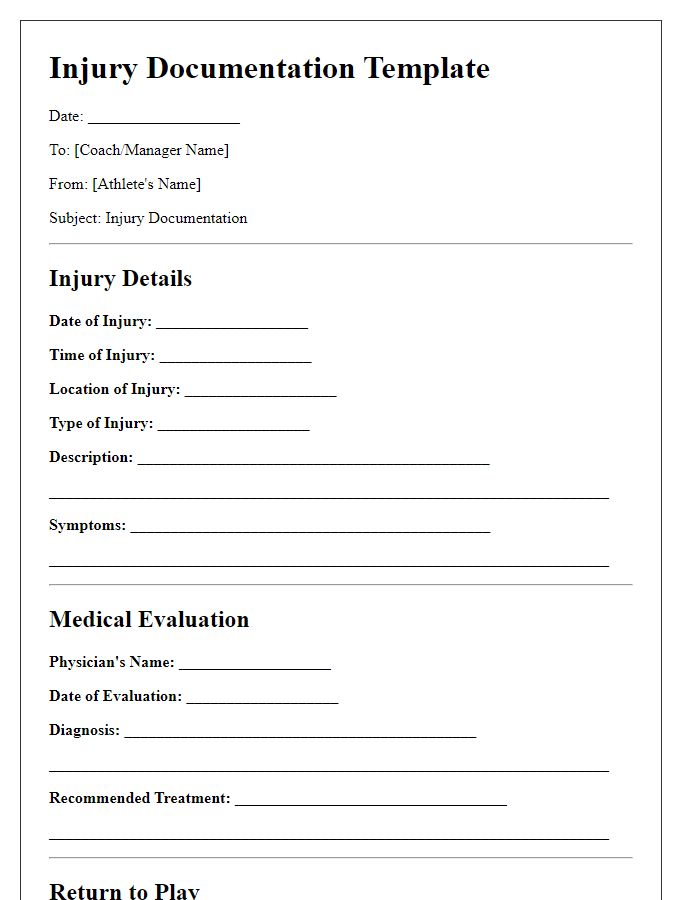
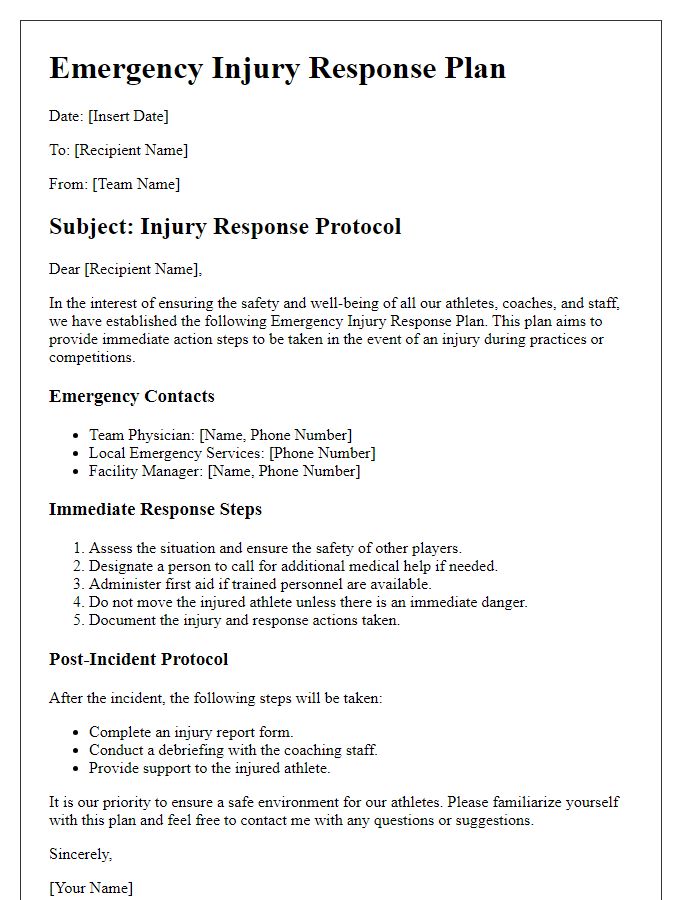
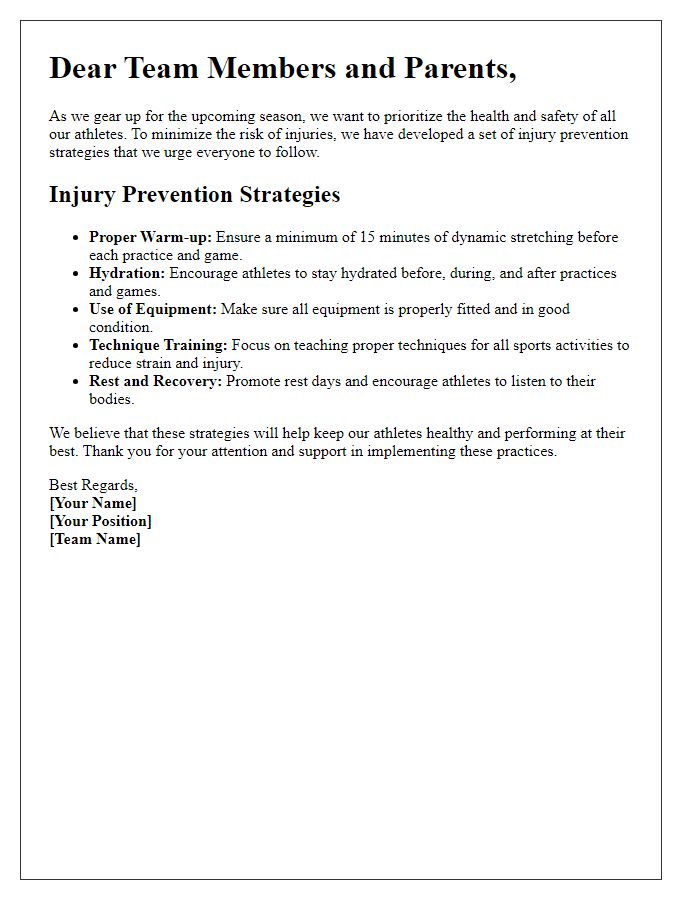
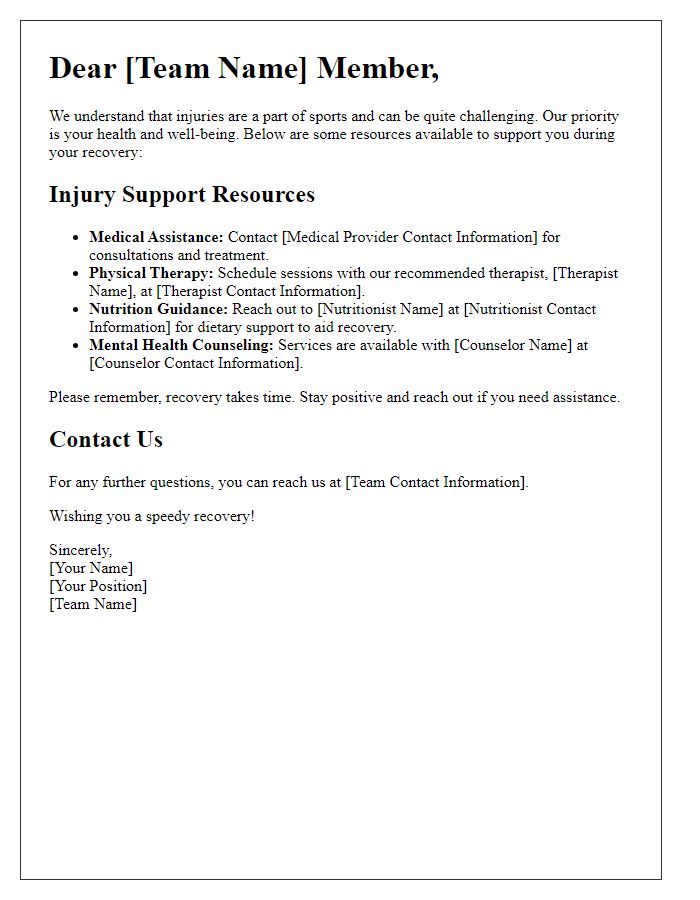


Comments